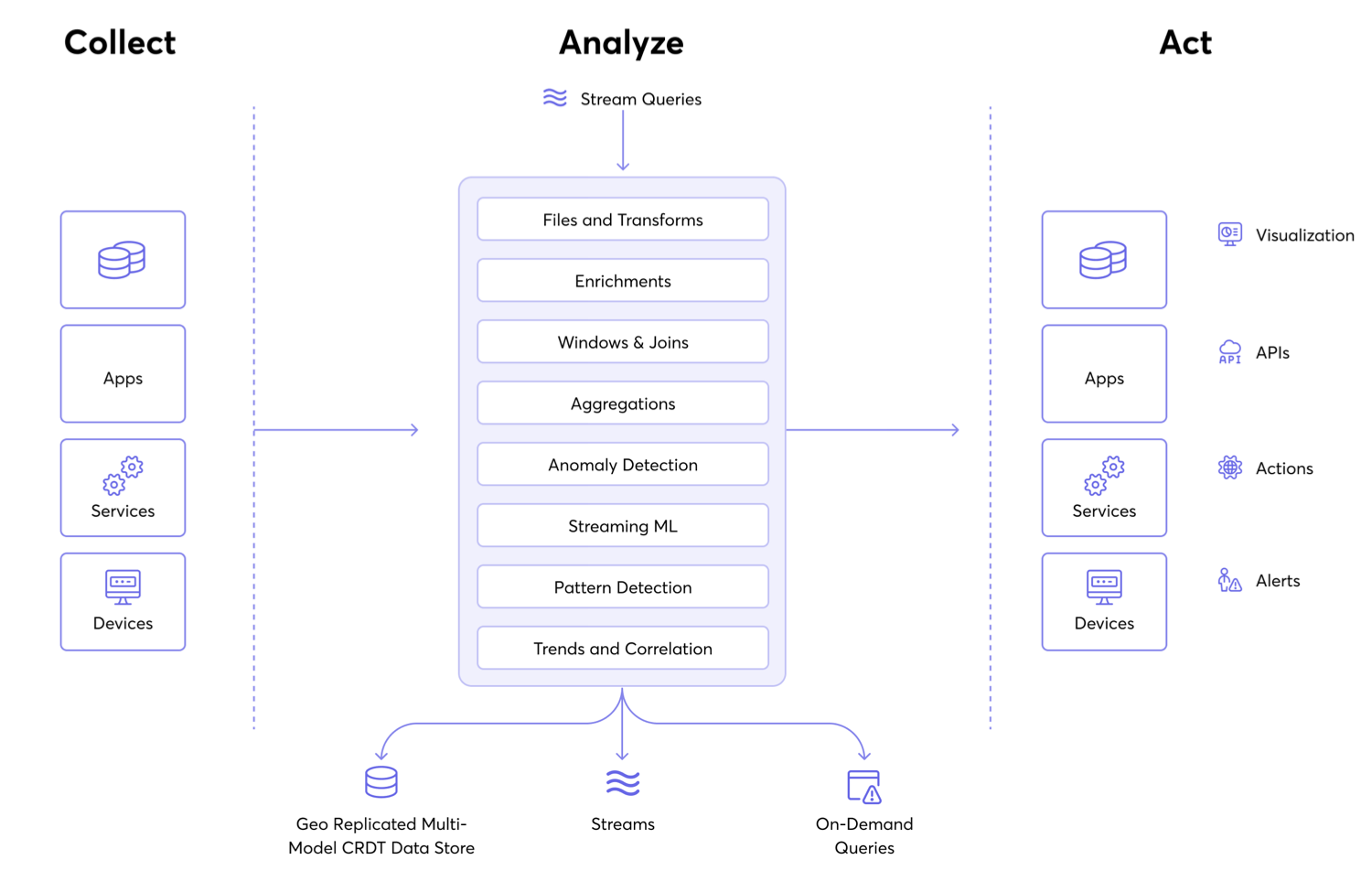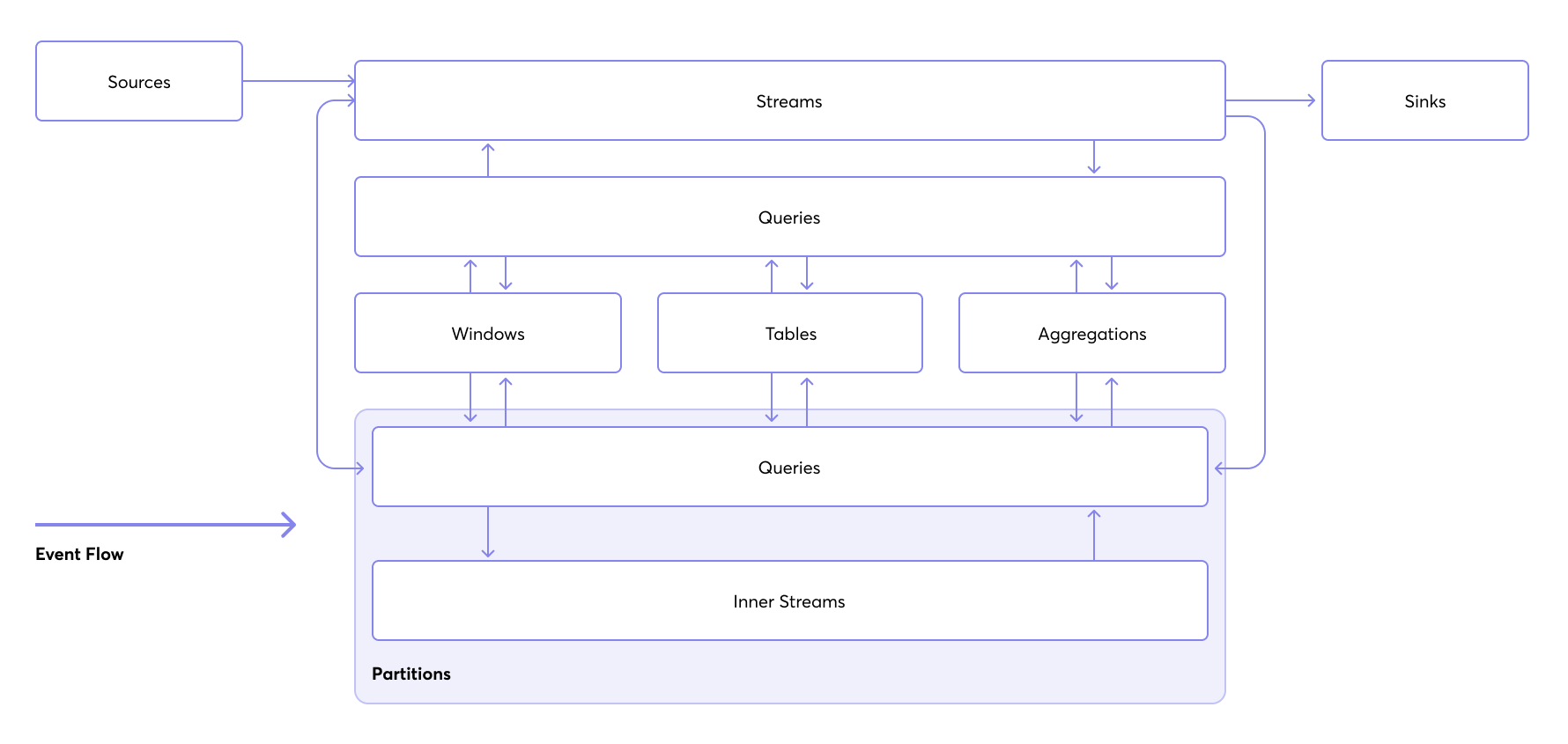How Stream Workers Work
Stream workers are complex event processors. They consume events, process them, and then send the data somewhere. This page explains that process more thoroughly, but still at a high level.
Stream Worker Flow
When the stream worker is published, it:
- Consumes data as individual, sequential events from many different types of sources.
- Pipe the events to queries through various streams for processing to transform, enrich, and generate insights.
- Generates new events based on the processing done at the queries.
- Sends newly-generated events through output to streams, publishing them to many different types of sinks.
When published, stream workers also create any query workers, tables (collections), and streams included in the definition if they do not already exist.
Basic Stream Processing Flow
The following are the major components of our stream worker engine. Events are collected by sources such as services and devices, they are analyzed by the stream worker queries, and then sent out as events to sinks that can be acted on.

Stream Worker Flow Diagram
The following diagram depicts some of the key elements of stream worker and how events flow through them.
- Sources send event input in a stream.
- The stream is processed by queries, which might use windows, tables, aggregations, and partitions.
- After processing, events are sent to sinks.
For more information about parts of a stream worker, refer to Stream Worker Elements.
